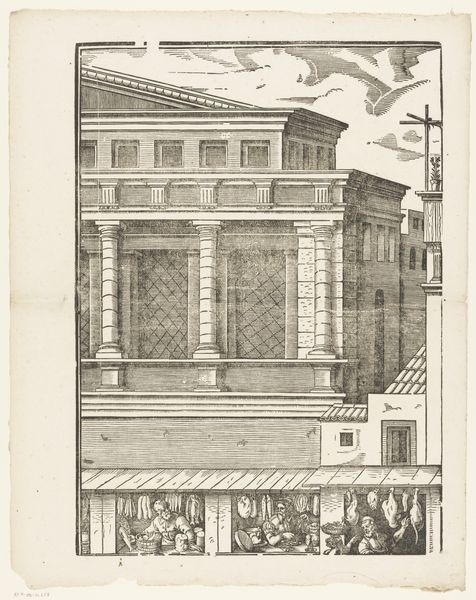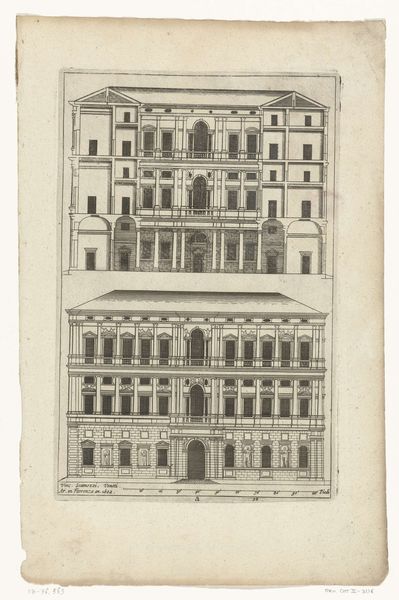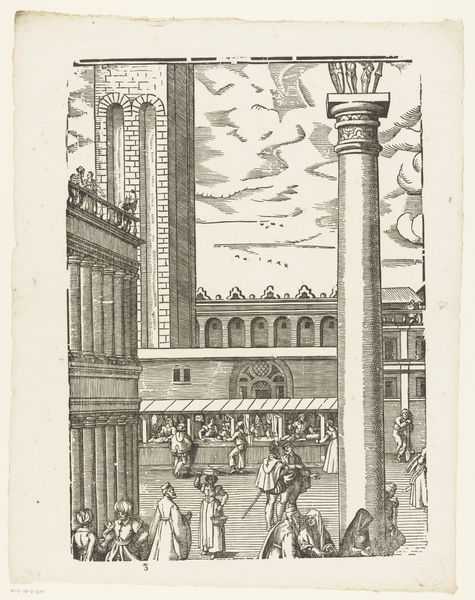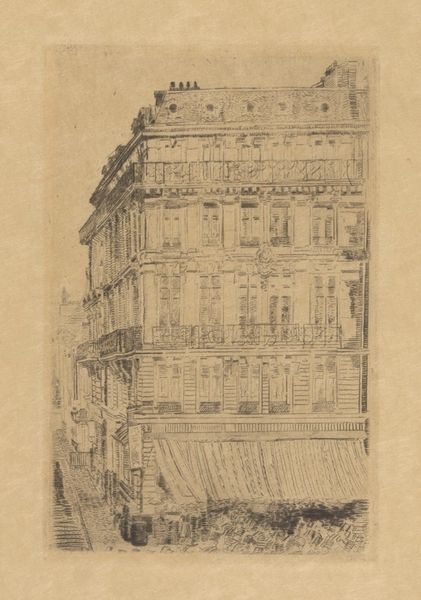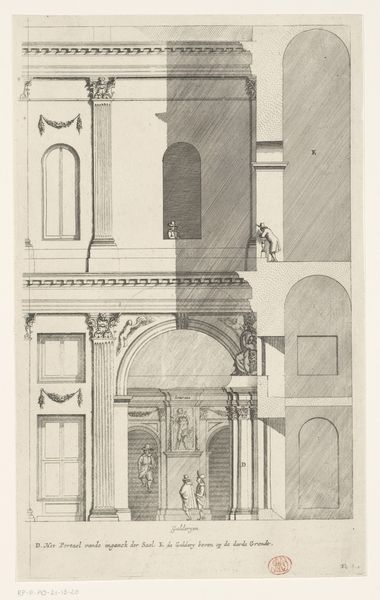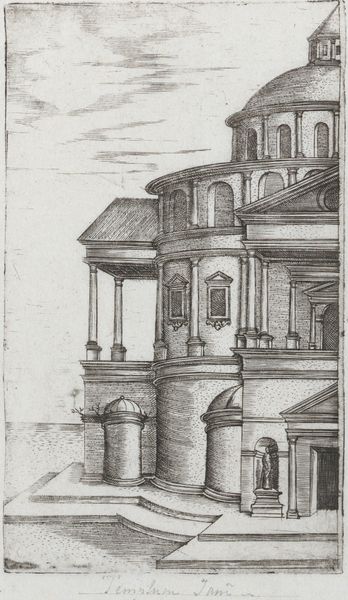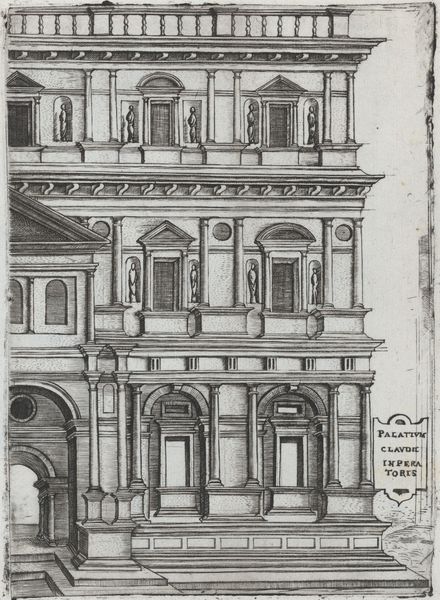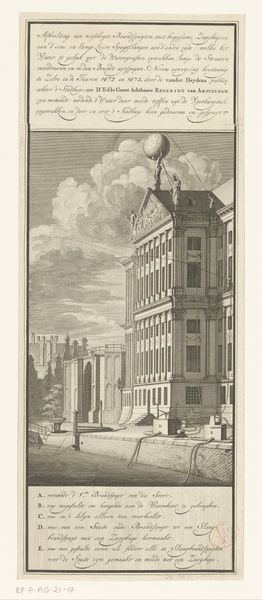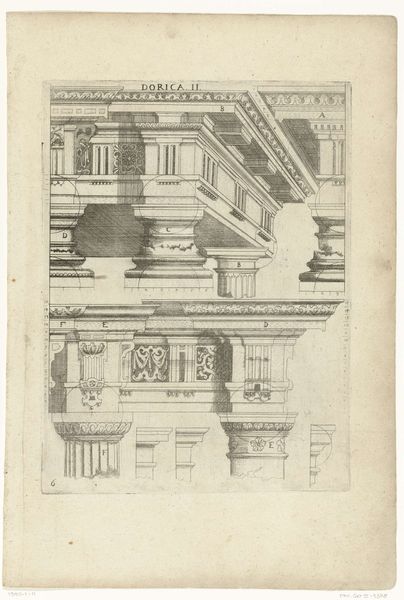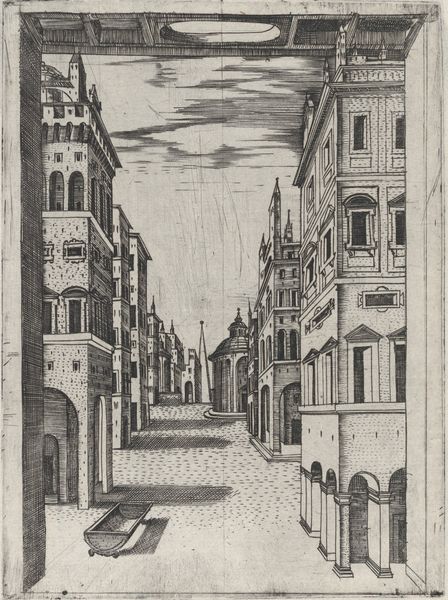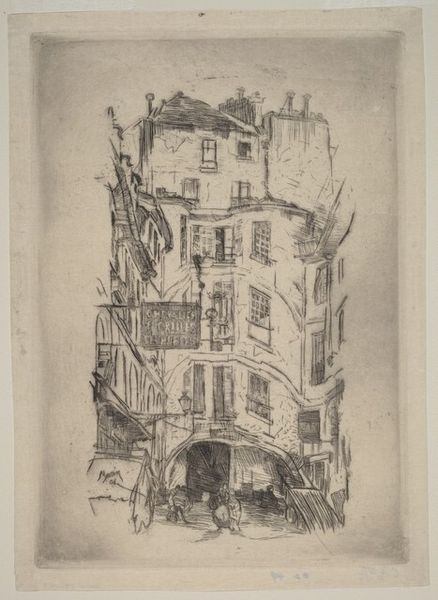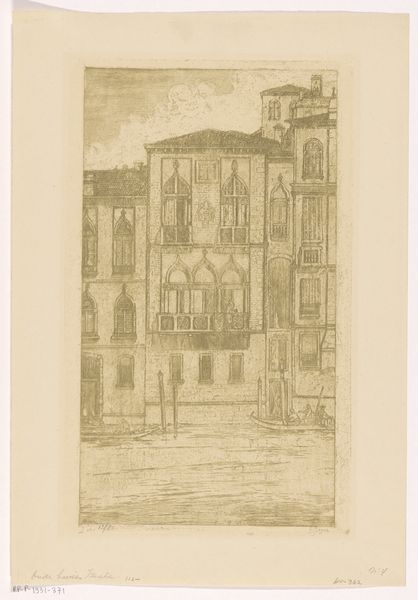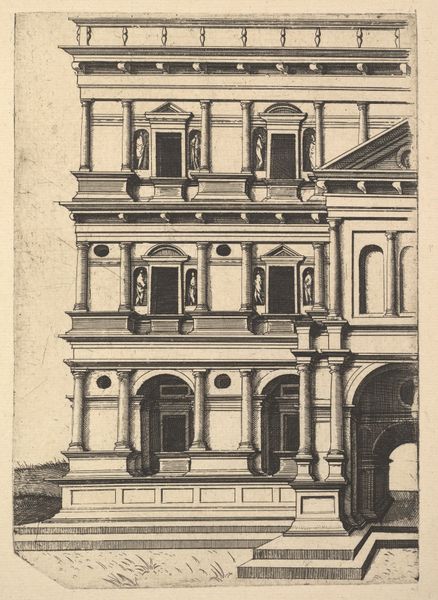
drawing, print, ink, pen, engraving
#
drawing
#
aged paper
#
toned paper
#
baroque
#
mechanical pen drawing
# print
#
old engraving style
#
sketch book
#
personal sketchbook
#
ink
#
pen-ink sketch
#
pen work
#
sketchbook drawing
#
pen
#
cityscape
#
genre-painting
#
storyboard and sketchbook work
#
engraving
Dimensions: height 427 mm, width 342 mm, height 380 mm, width 273 mm
Copyright: Rijks Museum: Open Domain
Curator: Welcome! We’re looking at "Festa della Sensa (tweede gedeelte)," a pen, ink, and engraving on toned paper from 1679, currently held at the Rijksmuseum. Editor: My initial reaction is that the artwork's structure has an odd yet captivating precision. It's as if a building is being diagrammed while simultaneously revealing a candid moment. Curator: It certainly presents a fascinating study of society. The Festa della Sensa, or Ascension Day Festival, was a major event in Venice, and here it’s depicted through the lens of class and spectatorship. We can interpret each window and level as a stratified space, emphasizing social hierarchy. Editor: I agree; there’s something very considered in how each of these individuals is constructed through a repetitive visual language. For example, note the echoing window frames which produce an optical effect that almost flattens the spatial experience. The visual tension lies between depth and compression. Curator: The artist also uses details like the figures on the rooftop observing a spectacle we don't see. Their elevated position grants them literal and symbolic power. Meanwhile, on the lower levels, others look out from their windows or linger on the street, their perspectives and access markedly different. Consider it in relation to other images of Venetian festivals and how it reflects social and political dynamics. Editor: Indeed. There’s also the interplay of light and shadow. The lines of the architecture work like dark linear gestures. Consider, too, the cloudscape. Jost Amman masterfully juxtaposes the solid architectural forms with these airy, dynamic shapes—introducing visual counterpoints across the composition. It provides relief in an otherwise regimented space. Curator: And, thinking about spectatorship, doesn’t it remind you of how we view historical events through the filtered perspectives of art? It's as if we're peering into a moment that’s been consciously constructed and curated for our gaze. Who had access, whose story is prioritised and what biases were in play. Editor: Precisely! Analyzing its structural elements and technical skill provides an opportunity to examine how artists perceive the event and convey certain messages. Looking closely also asks us to ask questions about how those figures were portrayed and positioned in relation to each other. Curator: Indeed. We can also question if their representation here challenged or supported existing hierarchies. Editor: I am struck by its interplay of detail and depth. A piece like this reveals much about composition. Curator: And also, when read contextually, how art preserves historical consciousness.
Comments
No comments
Be the first to comment and join the conversation on the ultimate creative platform.
